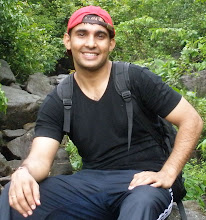Continuing with its calibrated monetary tightening cycle, the RBI today hiked the repo and reverse repo rates by 25bps each. This is a reaction to the high and sticky inflation, which continues to be nearly double the medium-term target of the RBI since Jan ’10. RBI now projects WPI inflation at 8% by end-Mar ’11.
The repo rate – the rate at which banks borrow from the RBI – now stands at 6.75% and the reverse-repo rate – the rate at which banks park money with the RBI – at 5.75%. Today’s rate hike in the policy rates marks the eighth consecutive hike since Feb ’10. Overall, the RBI has hiked repo rate by 200bps, reverse-repo rate by 250bps and CRR by 100bps in the ongoing rate hike cycle. However, the effective rate hike in the operative rate has been 350bps as the operative rate has changed from reverse repo to repo rate due to change in the liquidity situation.
The RBI has increased WPI inflation projection for end-Mar ’11 to 8% from 7% earlier. WPI inflation inched up, to 8.3% in Feb ’11, after softening to 8.2% in Jan ’11. Notably, the RBI has mentioned that non-food manufactured products inflation continues to be Ill above its medium-term trend – it rose sharply, from 4.8% in Jan ’11 to 6.1% in Feb ’11 – indicating that producers are able to pass on higher input prices to consumers.
What next. The food articles inflation has started considerably softening on account of improved supply and the trend is expected to continue on a likely bumper rabi crop, which will hit the market early next month. The main pressure to inflation, going forward, is likely to come from manufactured products. I expect inflation to remain elevated (7% average) in FY12. I expect the RBI to hike policy rates once more by 25bps each in the next monetary policy meeting on 3 May ’11.
Now, the cost of loans is likely to go up further. Clearly, this negative for the Real estate, auto industry and other interest rate sensitive industries. So, guys, be ready to face a high interest rate environment and plan your expenditure accordingly.
The repo rate – the rate at which banks borrow from the RBI – now stands at 6.75% and the reverse-repo rate – the rate at which banks park money with the RBI – at 5.75%. Today’s rate hike in the policy rates marks the eighth consecutive hike since Feb ’10. Overall, the RBI has hiked repo rate by 200bps, reverse-repo rate by 250bps and CRR by 100bps in the ongoing rate hike cycle. However, the effective rate hike in the operative rate has been 350bps as the operative rate has changed from reverse repo to repo rate due to change in the liquidity situation.
The RBI has increased WPI inflation projection for end-Mar ’11 to 8% from 7% earlier. WPI inflation inched up, to 8.3% in Feb ’11, after softening to 8.2% in Jan ’11. Notably, the RBI has mentioned that non-food manufactured products inflation continues to be Ill above its medium-term trend – it rose sharply, from 4.8% in Jan ’11 to 6.1% in Feb ’11 – indicating that producers are able to pass on higher input prices to consumers.
What next. The food articles inflation has started considerably softening on account of improved supply and the trend is expected to continue on a likely bumper rabi crop, which will hit the market early next month. The main pressure to inflation, going forward, is likely to come from manufactured products. I expect inflation to remain elevated (7% average) in FY12. I expect the RBI to hike policy rates once more by 25bps each in the next monetary policy meeting on 3 May ’11.
Now, the cost of loans is likely to go up further. Clearly, this negative for the Real estate, auto industry and other interest rate sensitive industries. So, guys, be ready to face a high interest rate environment and plan your expenditure accordingly.






I've been reading this blog, and I couldn't understand the main point behind the theory above.
ReplyDeleteThe RBI increases the policy rate at which commercial banks borrow money from the RBI...since banks get money at a higher interest rate...they also increase the interest rate for loans people...thus people reduce borrowing money ...spend less....demand goes down....and so do the prices of white goods, commodities..etc. So RBI does it to control inflation in the country. Hope you understood it.
ReplyDelete